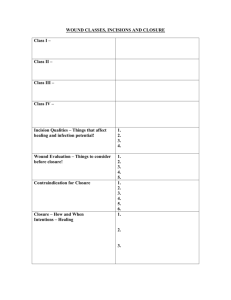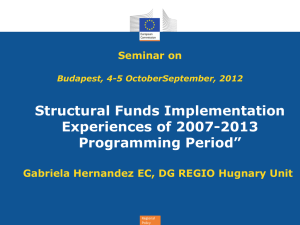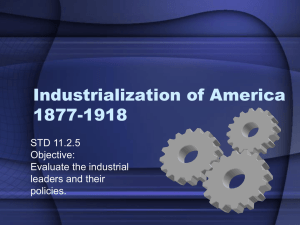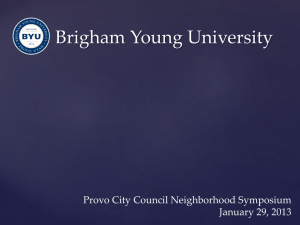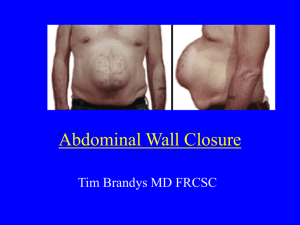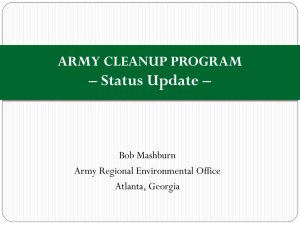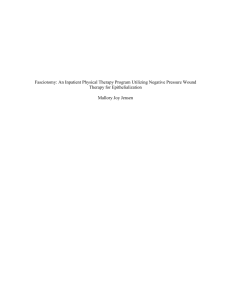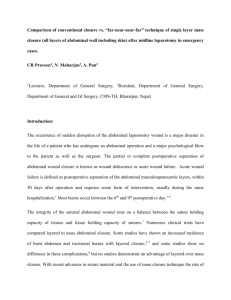Lecture Title - Specialists Without Borders
advertisement
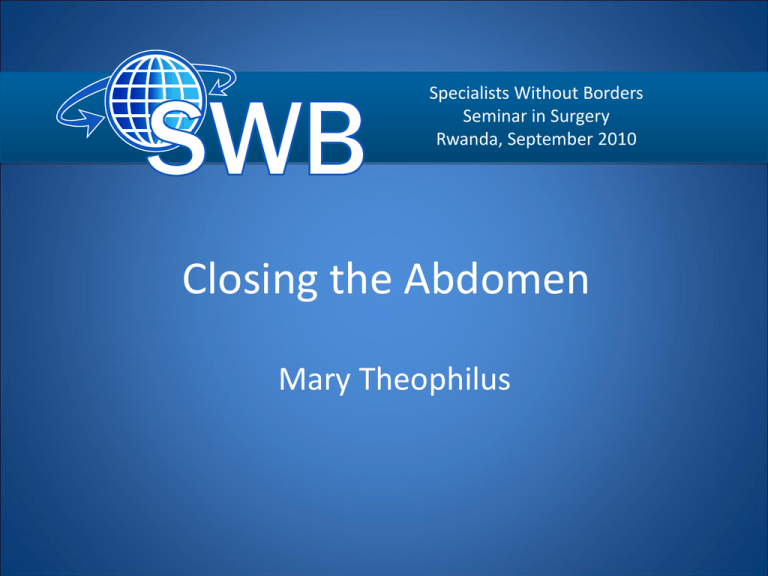
Specialists Without Borders Seminar in Surgery Rwanda, September 2010 Closing the Abdomen Mary Theophilus www.specialistswithoutborders.org Outline • • • • • • Factors influencing type of abdominal closure Post-operative wound dehiscence Principles of abdominal closure Abdominal Compartment Syndrome Laparostomy = temporary closure Closure post-laparostomy www.specialistswithoutborders.org What type of closure? Factors influencing type of abdominal closure • Patient factors – diabetes, steroids, obesity, malnutrition etc… • Operative factors – Risk of wound infection…contamination? – Unable to close abdomen – Weak or frayed fascia • Planned re-operation(s)? www.specialistswithoutborders.org Post-operative Wound Dehiscence • Signs – Excessive serous discharge from wound – Palpable defect in fascia – Bowel on view ! • A full thickness wound dehiscence involving bowel requires urgent closure – herniated bowel will develop an overlying layer of granulation tissue (peritonealised) making future hernia repair impossible. www.specialistswithoutborders.org Post-operative Wound Dehiscence 2 weeks post-laparotomy for perforated appendicitis Small bowel in the base of the wound has been covered by granulation tissue, making primary closure of the wound impossible. The wound was treated with dressings. www.specialistswithoutborders.org Principles of Abdominal Closure • No tension ! • Single layer closure – Incorporating fascia and no muscle • Jenkins’ Rule of 4 – 2cm by 2cm • Continuous vs Interrupted – If high risk of wound infection - use interrupted www.specialistswithoutborders.org Tension Sutures www.specialistswithoutborders.org If it will not close! • Back to first principles – NO TENSION • Abdominal Compartment Syndrome • = Laparostomy with later primary or mesh closure www.specialistswithoutborders.org Abdominal Compartment Syndrome • Organ dysfunction caused by intraabdominal hypertension • Normal pressure – 5-7mmHg , Hypertension >12mmHg • Respiratory, renal and GI tract impairment • Intravesical pressure measurement • NG tube, empty gut, diuretics • = Laparostomy with later primary or mesh closure www.specialistswithoutborders.org Laparostomy - Temporary Closure Advantages • Protects small bowel from fascial adhesions • Avoids fascial retraction and loss of domain • Allows tissue oedema to settle and the abdomen to close without tension • Useful if further planned re-operation www.specialistswithoutborders.org Laparostomy - Temporary Closure Disadvantages • Fraying of the fascia (if sutured) compromising subsequent definitive closure • Long term laparostomy can lead to shortening of the rectus abdominis muscles – Especially in the obese – Makes definitive closure difficult – Relaxation incisions maybe required www.specialistswithoutborders.org Good technique • • • • • Rapid closure Protects intra-abdominal organs Prevents peritoneal contamination Addresses peritoneal fluid Allows reoperation with minimal tissue damage • Allows timely and easy closure with low rate of ensuing wound complications www.specialistswithoutborders.org Laparostomy Techniques • • • • Bogota bag Towel clip closure Zip closure Mesh (absorbable, non-absorbable, composite) • Vac dressing www.specialistswithoutborders.org Laparostomy Techniques • Bogota bag www.specialistswithoutborders.org Laparostomy Techniques • Towel clip closure www.specialistswithoutborders.org Laparostomy Techniques • Vac Dressing www.specialistswithoutborders.org Laparostomy Techniques • Suction dressing www.specialistswithoutborders.org Primary closure post laparostomy • Ideal • May be closed serially • May require other techniques to facilitate : Relaxing incisions in the fascia www.specialistswithoutborders.org Component Separation Technique www.specialistswithoutborders.org Mesh closure post Laparostomy • • • • • Non absorbable Absorbable Composite Bilayer Organic www.specialistswithoutborders.org Close skin if possible, else vac dressings, skin grafting, tissue flaps www.specialistswithoutborders.org Conclusions Primary closure best but only if NO TENSION Abdominal compartment syndrome should be avoided and treated with laparostomy Good laparostomy techniques enable early secondary closure and help avoid late wound complications www.specialistswithoutborders.org References • Finding the best Abdominal Closure: An evidence based review of the Literature, Ceydeli A, Rucinsk J, Wise L; Current Surgery 2005 vol 62:2, 220-225 • Temporary abdominal closure with the Vacuum pack technique, Ozguc H, Paksoy E,Ozturk E; Acta Chir Belg 2008, 108 (414-419) www.specialistswithoutborders.org www.specialistswithoutborders.org Thank You!
